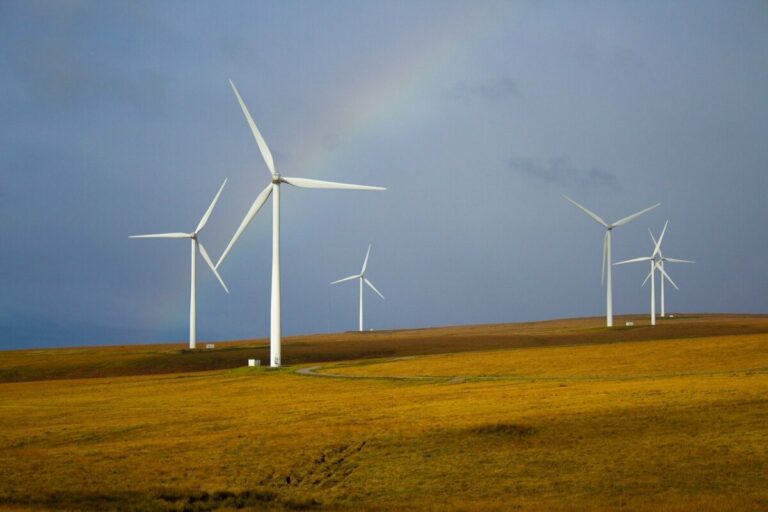Embracing renewable energy is more than a trend; it’s necessary for modern businesses aiming for sustainability and cost efficiency. Utility Bidder emphasizes the importance of adopting wind power for homes to reduce energy costs and minimize environmental impact.
This article explores the advantages of integrating wind energy projects into business operations and potential cost savings and highlights successful case studies. It aims to provide practical steps for businesses to transition to renewable energy sources, offering valuable insights for those seeking innovative and efficient solutions.
Wind Power for Sustainable Business Growth
Businesses today face the dual challenge of managing operational costs and reducing their environmental footprint. Wind power, a leading renewable energy source, presents a viable solution.
Integrating electrical energy into business operations can bring significant cost savings and sustainability benefits. Understanding the components and potential of wind energy is crucial for businesses considering this green transition.
What is Wind Power?
Wind power converts kinetic energy from the wind into electrical energy using a wind turbine. The kinetic energy in the wind moves the blades of a wind turbine, which spins a generator to produce electricity. This method of energy generation is clean, renewable, and abundant, making it an attractive option for sustainable energy production.
Types of Wind Power
Wind energy can be categorized mainly into onshore and offshore wind energy.
- Onshore wind farm are built on land where wind speeds are typically lower but sufficient for energy production.
- Offshore wind turbines involve wind turbines placed in bodies of water, where wind speeds are higher and more consistent, leading to greater energy output. Here are some wind energy facts to keep an eye out on.
Benefits of Integrating Wind Energy
Cost Savings
Investing in wind power can lead to substantial cost savings for businesses. According to the National Renewable Energy Laboratory, wind energy costs have decreased significantly over the past decade. Companies can reduce their dependence on traditional energy sources, leading to lower utility bills.
Environmental Impact
Wind power generators are environmentally friendly as they produce no greenhouse gas emissions during operation. When switching to wind energy, businesses can significantly lower their carbon footprint. This shift helps combat climate change and enhances the company’s reputation among eco-conscious consumers and stakeholders.
Case Studies of Successful Integration
Google has been at the forefront of adopting renewable. The company has invested heavily in wind power projects and has entered into long-term agreements to purchase wind energy. These initiatives have allowed Google to achieve its goal of running its operations entirely on renewable. Also, learn how to implement it.
- IKEA
IKEA has also committed to sustainability through wind energy. The company owns and operates wind farms in various countries, generating more energy than it consumes. This offsets IKEA’s energy costs and demonstrates its commitment to environmental responsibility.
Practical Steps for Transitioning to Wind Power
Before transitioning, businesses need to assess the wind power potential in their area. Factors such as average wind speed, wind power capacity, and available land or offshore space are critical.
- Collaborating with experts and utilizing tools from organizations like the Global Wind Energy Council can provide valuable insights.
- Businesses can invest in wind turbines or partner with wind power providers. Wind turbines generate electrical energy, giving companies direct control over their energy production and costs.
- Alternatively, entering into power purchase agreements (PPAs) with wind energy production can be cost-effective without requiring upfront capital investment.
Overcoming Challenges
Initial Investment
The initial investment in wind power infrastructure can be high. However, businesses can explore various financing options, including government grants, subsidies, and loans. Additionally, partnerships with energy companies can help mitigate upfront costs.
Regulatory and Compliance Issues
Navigating the regulatory landscape can be challenging. Businesses must comply with local, national, and international regulations regarding renewable installations. Engaging with legal experts and regulatory bodies early in planning can ensure smooth project implementation.
Future Trends in Wind Turbines
- Technological advancements are continuously improving the efficiency and cost-effectiveness of wind turbines.
- Offshore wind projects are gaining momentum due to higher and more consistent wind speeds. Countries are investing heavily in offshore wind farms, which have the potential to boost global wind energy generation significantly.
Wind Power Pros and Cons
Pros
- Renewable source
- Low operating costs
- Reduces carbon footprint
- Stable energy prices
Cons
- Intermittent supply
- Noise concerns
Final Words
Embracing wind power offers businesses a pathway to sustainable growth. The benefits of cost savings, environmental impact reduction, and brand enhancement are compelling reasons for companies to consider this renewable source.
FAQs
How can businesses assess their wind power potential?
Businesses can evaluate wind power potential through wind speed measurements, site assessments, and consulting with experts or organizations like the GWEC.
What are the primary benefits of offshore wind power for businesses?
Offshore power offers higher and more consistent wind speeds, leading to greater energy output and efficiency, significantly benefiting businesses near coastlines.
Are there government incentives for businesses investing in wind power?
Many governments offer grants, subsidies, and tax incentives to encourage businesses to invest in renewable sources like wind power, reducing initial investment costs.













